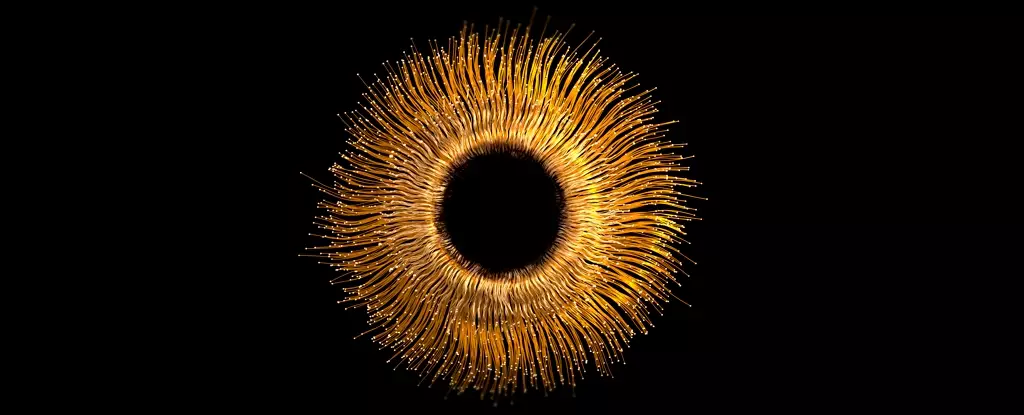Age-Related Macular Degeneration (AMD) is a pressing global health concern, primarily impacting the aging population. As the leading cause of vision impairment, AMD wreaks havoc on one’s ability to perform daily activities, from reading to recognizing faces. This gradual deterioration of the macula—responsible for producing sharp, central vision—leads to a collective sense of helplessness among millions. Conventional treatments, while useful in slowing the progression of this affliction, fall painfully short of rejuvenating lost sight. The prevailing narrative is often one of resignation: patients are left to cope with the limitations imposed by this insidious condition without the promise of healing.
Gold Nanoparticles: An Innovative Approach
A recent study has sparked entrepreneurial excitement among researchers and those afflicted by AMD. This investigation, conducted on engineered mice, introduces an extraordinary solution to these daunting challenges: a precisely calibrated therapy utilizing gold nanoparticles. These minuscule particles, thousands of times thinner than a human hair, are infused with antibodies designed to home in on particular eye cells. The true magic happens when these particles are injected into the vitreous chamber of the eye, marking a significant departure from traditional invasive surgical methods.
Biomedical engineer Jiarui Nie, affiliated with Brown University, emphasizes the transformative potential of this therapy. Unlike existing retinal interventions, this new technique comprises a laser-based system that instructs the nanoparticles to emulate the natural function of photoreceptors. In an age where minimally invasive procedures are increasingly prized, this innovation stands out as a quintessential example of ingenuity in medical technology. The potential for embedding such laser technology into everyday eyewear could radically enhance patient experience and ease of use.
A Step Towards Practicality and Application
While this groundbreaking advancement is rooted in animal studies, preliminary results indicate that the approach offers a feasible pathway toward restoring vision. Researchers have reported that the gold nanoparticles can remain stable within the retina for an extended duration, exhibiting negligible toxicity. This stability, coupled with their ability to stimulate the visual pathway, reinforces the promise of this therapy. However, moving from mice to humans remains fraught with challenges; translating success in animal studies to reliable treatments in humans often requires rigorous research and extensive trials.
The encouraging outcomes of this study dovetail with a larger movement in the field of ophthalmology. Researchers have begun exploring novel applications of cutting-edge technology to combat various retinal diseases. The prospect of reprogramming existing retinal cells to take on the roles of malfunctioning photoreceptors adds further dimensions to the ongoing conversation surrounding AMD treatments. Such progressive approaches open the door to reimagining how we view the future of eye health.
The Emotional Landscape of Vision Loss
It is crucial to recognize that advancements in medical technology are not merely scientific milestones; they carry profound emotional significance for those whose lives are altered by vision loss. The hope that this new therapy could eventually restore sight—or at the very least improve it—brings a sense of optimism that transcends the clinical realm. Millions grappling with AMD and similar conditions live with uncertainty each day, and the possibility of regaining their vision is transformative. If successful, the integration of these revolutionary therapies holds the potential to illuminate lives once shrouded in darkness.
Looking Ahead: A Cautious Optimism
While it is easy to become swept away by the exciting prospects this research presents, it is essential to approach this breakthrough with measured optimism. The medical landscape is fraught with trials that stand between innovation and application. Human clinical trials typically extend over years, and ensuring both efficacy and safety in human subjects is a process that cannot be rushed. Thus, as we celebrate the ingenuity behind nanoparticle therapy, we must remain cognizant of the realities that lie ahead.
The development of this new therapy powered by gold nanoparticles symbolizes a pivotal moment in the treatment of AMD. It bridges the gap between aspiration and possibility, harnessing advanced technology where traditional methods falter. As researchers dedicate their efforts to navigating the translation from animal models to human applications, the hope of revitalizing sight, profoundly impacting lives, becomes a tangible aspiration on the horizon. While we are in the infancy of understanding this therapeutic approach, the implications could reverberate through the field of ophthalmology and beyond, heralding a future imbued with healing and hope.

